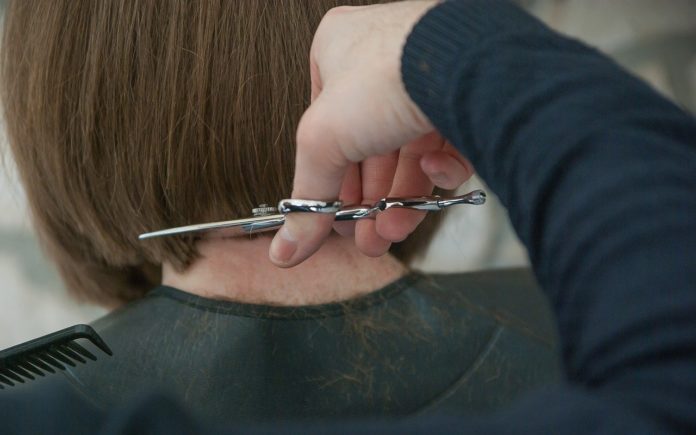
Earlier this week, the Dutch Prime Minister announced that some anti-coronavirus measures are to be eased. So, as of Monday, most contact professionals can go back to work. Of course, people in these professions must be able to work as safely as possible. It must also be safe for their clients and patients.
What are contact occupations? This is when there is frequent, direct contact between people, usually within a distance of 1.5m. The Dutch Health Department (RIVM) has advice on how people in these sectors can get, safely, back to work. According to the RIVM, the following sector associations can use these measures to develop their own protocols:
- Psychologists, insurance, occupational therapists, doctors and paramedics, including physiotherapy, remedial therapy, occupational therapy, speech therapy/phoniatrics, dietetics, skin therapy, optometry, orthopaedics, podiatry.
- Alternative healthcare professionals such as chiropractors, acupuncturists, haptotherapists, osteopaths, reiki therapists, tai-chi therapists, masseurs, and reflexologists.
- Nail and beauty salons, hairdressers, make-up artists, and tattoo artists.
- Services such as driving instructors.
Spas and sex workers are an exception. They’re expected to be able to resume their work on 1 September 2020.
Follow the Health Department’s advice
It’s vital that you, as a contact worker, follow the RIVM’s advice:
- Carefully follow hygiene measures.
- Wash your hands regularly with soap and water.
- Don’t touch your face or shake hands with your clients/patients.
- Cough and sneeze in the crook of your arm.
All treatment’s to take place by appointment only. From now on, you must also do a health check on yourself, your employees, and your clients/patients. You must ensure you and your employees are healthy, and that your client/patient has no COVID-19 complaints. That’s to be done before starting the service.
Before the appointment, you have to ask your client/patient several questions. If one of these questions is answered YES, don’t make/cancel an appointment. The same is true for employees. If one of the questions is answered with YES, the employee may not come to work.
The questions are:
- Have you had one or more of these (mild) complaints in the past 24 hours or have them at present: rhinitis, coughing, shortness of breath or fever (38°C +)?
- Do you currently have a roommate/family member with a fever and who seems anxious?
- Have you had the novel coronavirus – diagnosed with a laboratory test – within the last seven days?
- Have you had a roommate/family member that had the (officially diagnosed) novel coronavirus? And have you had contact with this roommate/family member less than 14 days ago while he/she was still symptomatic?
- Are you in home isolation because you’ve had direct contact with someone diagnosed with the new coronavirus?
The work or appointment must be postponed until each question can be answered NO.
If, you or any of your employees belong to one of the at-risk groups, use your own discretion as to whether it’s medically responsible to work. Your (company) doctor can help you assess whether you can carry out any activities. You must be allowed not to resume work or make arrangements to do something else.

Personal protective equipment’s not required
If you do the health check well and if your client/patient answers truthfully, personal protective equipment isn’t necessary. That’s because the advice is to stay at home in case of mild complaints. There are also social distancing and hygienic measures in place.
Paramedics also don’t need PPE, with one exception: say a patient’s answered ‘yes’ to one of the above questions. But the paramedical care cannot be postponed and emergency care is necessary, then paramedic does, indeed, need to wear the relevant sector association’s recommended PPE.
If you work in one of the contact professions, and you suspect you’ve caught COVID-19, you can be tested. That can be done in consultation with the company doctor, Municipal Health Service or GP. You must stay home as soon as you get sick and until the test result is known.
If you test positive, stay at home for at least seven days. Once you are symptom-free for 24 hours, you can go back to work. The GGD will contact you to discuss the measures that apply to you and your housemates to prevent the further spread of the virus.
The RIVM advises separating appointment and administrative or staff areas. This will limit the number of people in one room as much as possible. It is essential that employees stay 1.5m apart and that the workplace is kept clean. Sanitise rooms, furniture, and materials regularly. In doing so, take into account additional hygiene or cleaning measures based on guidelines, quality requirements or legislation from your sector or professional group.
Other preventative measures include:
- Enclose written/digital instructions with your patient/client appointment confirmation
- Tell patients/clients to come alone.
- Keep the consultation/service as short as possible and keep as much distance as possible.
- Limit the number of clients/patients/employees and the number of people in one room as much as possible
- Use areas where it is always possible to keep 1.5m between people.
- Provide planning so that there is always as little contact as possible between people.
- If the waiting area is not large enough for people to keep 1.5m apart, clients/patients will have to wait outside or in their cars.
- Provide a physical (plastic) barrier at, for instance, the counter or reception when the 1.5m distance isn’t feasible. Although there is little evidence of effectiveness, it can reduce your (and your employees) exposure to clients/patients’ coughs or sneezes.
- Remove coffee/water supply, toys or magazines from the waiting room.
- Create fixed walking routes.
- Ensure clients/patients wash their hands with soap and water upon entry, so provide sufficient (hand) soap and paper towels for their use.
- Clean door handles, which clients/patients touch several times a day.
- Regularly clean the chairs, handrails, door handles, and tables in the waiting rooms and toilet.
- Clean the entire treatment room at the end of each day.
- After use, dispose of disposable items and materials in the regular manner.
The most important thing is to prevent contamination and risk – the risk that you can become ill due to a contagious customer and that of infecting clients/patients.
Source: RIVM
Translation: Melinda Walraven










